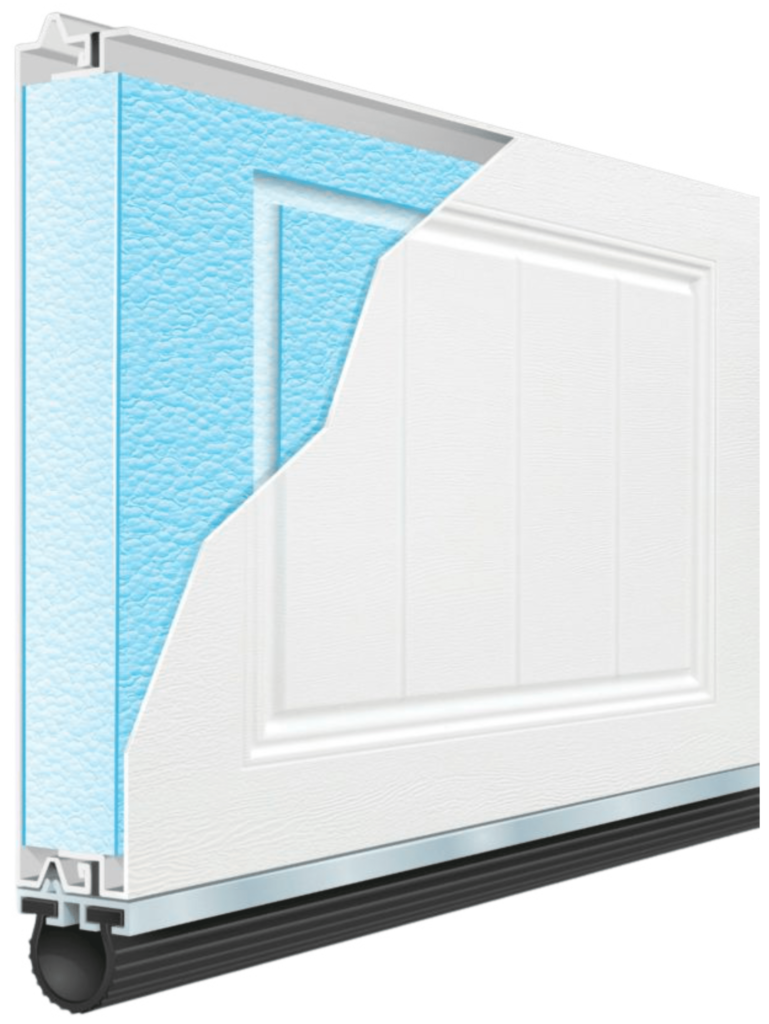When it comes to maximizing the energy efficiency and comfort of your home, insulating your garage door plays a crucial role. Among the various insulation methods available, two prominent options are foamed-in-place polyurethane insulation and injected polyurethane insulation. In this guide, we’ll delve into the intricacies of these insulation techniques, highlighting their differences, benefits, and considerations for your garage door insulation needs.
Foamed-in-Place Polyurethane Insulation:
Application Process:
- Foamed-in-place insulation involves spraying liquid polyurethane foam directly onto the garage door panels.
- The foam expands and fills the entire cavity, adhering to the door’s surface and creating a seamless layer of insulation.
- Specialized equipment is required for precise spraying and foam expansion control.
Benefits:
- Provides uniform insulation coverage across the entire door panel.
- Adheres tightly to the door, minimizing air gaps and ensuring effective insulation.
- High R-value, which indicates excellent thermal resistance.
Considerations:
- Requires expertise and proper equipment for application.
- Messier process compared to injected insulation.
- Ideal for new garage doors or when replacing entire door panels.
Injected Polyurethane Insulation:
Application Process:
- Injected insulation involves creating channels or holes in the garage door panels.
- Liquid polyurethane foam is injected into these channels using specialized equipment.
- The foam expands within the channels, providing localized insulation.
Benefits:
- Allows for targeted insulation, adding insulation where needed.
- Neat and less messy process compared to foamed-in-place insulation.
- Suitable for retrofitting existing garage doors or specific insulation needs.
Considerations:
- Coverage might not be as uniform as foamed-in-place insulation.
- Requires expertise to create precise channels and inject foam accurately.
Choosing the Right Method:
- Foamed-in-Place Insulation: This method is ideal for new garage doors or situations where complete panel replacement is feasible. It provides comprehensive and uniform insulation, ensuring optimal energy efficiency. Professional installation is recommended due to the specialized equipment required.
- Injected Foam Insulation: If you’re looking to add insulation to specific areas of your existing garage door or have retrofitting needs, injected insulation is a targeted solution. It’s less disruptive and can be a more suitable DIY option, especially for localized insulation needs.
The choice between foamed-in-place polyurethane insulation and injected polyurethane insulation depends on factors such as the type of garage door you have, your insulation goals, and the level of expertise you possess. Both methods offer effective ways to enhance your garage’s energy efficiency and overall comfort. By understanding the differences, benefits, and considerations of these insulation techniques, you can make a well-informed decision that aligns with your specific requirements and contributes to a more insulated and comfortable living space.
Contact our team at (647) 424-3555 to learn more about our insulated garage doors!


